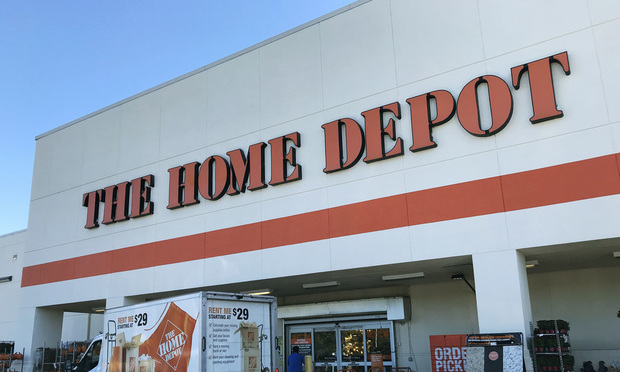When a catastrophe occurs, significantly more focus, oversight, and demands are placed on all parties involved, from medical practitioners and rescue workers to insurance claims professionals and politicians.
For insurers, there is arguably no better time to demonstrate one's value and commitment to policyholders and the community as a whole. Being able to make good on such a promise hinges upon proper preparation and precise coordination of resources. Conversely, a misstep or seemingly innocuous oversight can yield disastrous results, especially during this time of heightened need and tension.
The mile-wide, EF5 multi-vortex tornado that collided with Joplin, Missouri on May 22, 2011 created unique challenges for claims professionals, some of who share their stories in this article. Even the most accomplished engineers and claims directors found the aftermath before them disorienting.
“It Looked Like Hiroshima”
“Upon our arrival, the damages looked like an atomic bomb had been detonated,” says Todd Klingaman, director of general adjusters at CNA, who arrived the very next morning to begin coordinating a substantial commercial claim. “I worked the Hays,Kansas tornado outbreak and this was entirely different. The sheer force of the storm allowed it to level buildings.”
“The utter scope of the damages was surreal,” adds Eric Dempsey, an engineer who would arrive several days later to investigate damages to machinery and electrical components at aJoplinmanufacturing plant. “Everywhere I looked, buildings were flattened to the ground. The tornado had carved a path of destruction three quarters of a mile wide and six miles long through the heart of the city.”
The tornado had struck the city of 50,000 that Sunday evening with unrelenting force, killing 161 people and injuring hundreds more. Winds peaked at 250 miles per hour, and the storm destroyed more than 7,500 homes and apartments as well as 550 commercial properties. When the twister finally dissipated, 25 percent of Joplin had been decimated, amounting to insured losses of at least $1.9 billion.
In the wake of the deadliest tornado since 1950, as with any large-scale catastrophe, people were left to cobble together resources as best they could, all while contending with utility outages and assisting the wounded. Catastrophes teach us many lessons—empathy, courage, resilience, to name just a few. In the claims realm, they teach us how to optimize response, and by extension, the quality of service to policyholders.

Critical Care
As Klingaman reveals, the commercial claim his team of experts handled for Freeman Health System underscores how proper planning and optimal catastrophe management minimizes both monetary and human loss. It began when St. John's Hospital became one of the casualties of the storm. Miraculously Freeman West Hospital, located just a few blocks from St. John's, was largely spared damage of similar enormity but nevertheless was reeling from the impact of the storm.
Ambulances were out of commission, and so critically injured residents began arriving via pickup trucks. The wounded were dropped off at the hospital parking lot, which would morph into a makeshift triage area. Dwight Douglas, general counsel for Freeman Health System, worked alongside doctors, nurses and volunteers at the emergency room for 6 continuous hours, and is thus intimately familiar with devastating injuries, such as severed limbs and objects impaled in bodies.
“We handled at least 500 traumatic injuries and performed 22 life-saving surgeries in about 10 hours,”Douglas explains.
With so many in need, getting the hospital functional was of paramount importance. Douglas immediately contacted CNA, with whom Freeman carries total replacement coverage of $450 million, for assistance. “This is when you get to see if an insurance company has adjusters in the field with the necessary experience, and if the company can bring in experts who can quickly assess the damage and begin remediation,” he said.
Rapid Response
It might be fair to say that Douglas, like many commercial insurance customers, was exhibiting the healthy skepticism required of a prudent gatekeeper of immense resources.
“Before [Douglas] could report the loss, we were already preparing for deployment to Joplin, as we knew we would have losses,” Klingaman says. 
“One can never be too prepared,” he continues. “Make the weather channel your friend. You should always be informed so you can be of service to the policyholder immediately.”
Klingaman immediately called Todd H. Waers, a property general adjuster at CNA, instructing him to “pack his bags.” All of this transpired before the call from Douglas.
“When insurance agent, Scott Brothers, of The InsuranceCenter asked when we could be there, my response was four minutes as we are on the outskirts of Joplin now,” Klingaman says. “We then identified the key players at the hospital with the assistance of Mr. Brothers and were onsite at the hospital within an hour.”
Involving the agent, Waers and Klingaman say, is essential because of the relationship already established. An insured will obviously not know the claims adjuster, so the agent can ease the comfort level and provide assurance that everyone is acting in his or her best interest. A trusted agent not only knows the insured but also the area and can therefore provide your adjustment team with valuable assistance.

CNA then supplied Douglas with all pertinent contact information—including cell phone numbers and email addresses. This illustrates another essential component of the catastrophe response equation, Waers points out.
“You have to keep the lines of communication open,” he says. “Make sure the insured understands that you are only a phone call away and will be there in person to assist. It is also crucial to provide regular, detailed updates, such as status meetings with the insured.”
Otherwise, ineffectual communication can harbor distrust. Or, as Klingaman explains, it can exacerbate the emotional toll. He also emphasizes regular meetings with claims staff, so as to “take care of your own” while diminishing distress, which can easily be transferred to the insured. “[You must] be there at the beginning and the end providing customer service to [your] policyholders.”
Klingaman brought in Robert Dudek, executive general adjuster, to assume handling all areas of the claim, provide ongoing direction to the CNA adjustment team, and communicate with Douglas and his facilities' directors, the CFO and CEOs. Dudek and Waers continued onsite for several weeks, with subsequent onsite meetings conducted on a monthly basis for the life of claim with all parties. Dudek's 30 years of experience brought the necessary expertise to keep the claim on track while helping to solidify the relationship with the insured and bring the claim to conclusion.
The 'Show Me' Phase
What Waers and Klingaman refer to as the “show me” phase was well underway by this point. Ostensibly, this means that the claims adjuster rightfully earns the trust of the insured, thereby taking control of the situation to speed the road to indemnity and squash unnecessary hassles and expenses. In order to do this, the claims adjuster must know how to prioritize tasks immediately, and effectively.
There were several urgent needs that CNA addressed to ensure functionality at Freeman:
1. A generator for the business center housing all system computers.
2. Emergency repair to 17,000 square feet of hospital roofing and other open buildings.
3. Potable water for the dialysis center and hospital.
4. Finding temporary locations to relocate destroyed operations.
5. Drying out of rain-soaked facilities.
“Freeman had a backup generator, which had been donated,” Klingaman says. “Unfortunately it wouldn't work, so Freeman came to us at 6 p.m. Wednesday we figured out another way. Through connections and vendor relationships with Belfor, we had a generator delivered, piped in and working by 4 a.m Thursday.”
Additionally, CNA contacted Vernon County Sheriff Ron Peckman to ask that the Nevada-Missouri National Guard's water purification and tanker unit be made available (if necessary), in the event that water pressure was not restored. Sheriff Peckman cleared the red tape and provided us with guidance on how to accomplish activation of the Guard unit via the Governor.
“Once you earn the trust of the insured, then a good adjustment team can really shine,” Klingaman says. “This also means that if you make a promise, then you absolutely must deliver on it.”
CNA leveraged its “preferred vendor program” relationships to provide the necessary experts to assist with the adjustment as well as with emergency and permanent repairs to the hospital. (The devastation in Joplin quickly exhausted the hospital's normal resources.)

Contingency Plans
After locating emergency generators, trucks to supply the main hospital and dialysis center with water, Klingaman and Waers enlisted the help of Bill Sutter, president and CEO of RMC Group LLC, with whom they had a long history of successful collaborations on claims, to address the emergency repairs to compromised buildings.
Sutter was also instrumental in delivering on the insurer's promise to the policyholder and quickly earned the trust of the other involved parties, which further streamlined the restoration of business at Freeman. Having worked in the trenches after Hurricane Katrina and the Sept. 11 attacks, Sutter possessed the foresight to prioritize projects effectively and secure contractors during a time when everyone was clamoring for resources.
“You want to believe that those you have been loyal to will get you what you need in large catastrophes,” Sutter says. “But as was the case in Joplin, it turns into a first-come, first-serve proposition. Everyone you're accustomed to using will invariably be inundated.”
Because Sutter also has a varied network of contacts and experts “on call,” he was able to quickly engage roofers out of Kansas City and other areas to repair the buildings. This demonstrates why staffing and resource allocation must always be a consideration, regardless of how active or relatively calm a season has been.
High-Profile Areas of Prioritization
With the added confidence that comes with working with a trusted partner, CNA could focus on other aspects of the project. Now that the most urgent needs had been met—in terms of securing water and so on—the team could examine the high-profile areas of loss. With Freeman's claim, this meant assessing the operating requirements and impact of the tornado on Freeman's Ozark Center for Autism.
“Autistic patients are very regimented, require specialized care and stable environment,” says Klingaman. “So when the autism center was destroyed, we realized it was essential to minimize the disruption and secure alternative accommodations as soon as possible.”
Once again drawing upon established relationships, Klingaman was able to relay requirements to trusted realtors, who could then go full bore with a search.
The storm had impacted about 30 of 72 facilities, each with unique needs. So once a location was finalized, contractors could meet with Sutter to determine the best temporary solutions.
“With temporary build outs, they must be appropriate and functional,” Sutter says. “It is not about what someone likes, but rather based on the needs and demands of restoring operations.” 
“You bring a tent to go camping, not a motor home,” Waers adds.
Both Klingaman and Waers advise that weighing the revenues a given book of business would normally be generating versus the expense of temporary accommodations requires a nuanced understanding of a host of variables. Especially with a large-scale loss, it is often prudent—if not compulsory—to bring in a certified public accountant (CPA).
Total Transparency
To facilitate a smooth claims process for Freeman, CNA consulted Kurt E. Harms, CPA, of Buchanan Clarke Schlader LLP. Harms was then able to create a thorough summary of all costs, accounting for contents, extra expenses, and so forth. Harms was able to lend more transparency to the overall process, further strengthening the policyholder-carrier relationship. During regularly scheduled meetings, Harms helped CNA relay ongoing expenditures and developments to achieve buy-in from all parties.
“I probably spent an hour and a half explaining how the spreadsheet works and how it is designed,” Harms says. “It provided a central point of reference to each party could check off items on a list and insert notes in Excel to confirm that we were all on the same page.
“All of the details were broken down into eight to ten subcategories, including exterior building damage, interior water damage, electrical, and HVAC, personal effects, disposable items, furniture, fixtures, etc.” he adds.”

On the contents side, Kari Burke, owner and operator of TOSCO, was able to calculate real-time numbers and meet with facilities to determine what documents and supplies had been damaged. Burke brought in teams of people and introduced them to the heads of facilities to compile a list of the damaged, destroyed, and disposable.
All contents data was incorporated into this master spreadsheet, which became an organic document of sorts. Initially the team began with educated projections and worked to agree with the insured on the overall scope and pricing. As more specific data became available, Harms would update the document, and working with hard numbers as soon as they became available provided everyone with an accurate reflection of costs as opposed to a theoretical one.

Large Lessons
There are so many moving parts in a large commercial claim. Here, we have covered but a few. Hopefully the case example provided will spark discussion about your own claims organization's level of responsiveness and business acumen.
In the above example, Freeman incurred about $9 million in insured losses following last year's deadly tornado. It is evident the loss would have been far greater, were it not for the successful coordination and dedication of this skilled team that relied on individual strengths as well as each other.
Photos courtesy of Dwight Douglas, all rights reserved.
Want to continue reading?
Become a Free PropertyCasualty360 Digital Reader
Your access to unlimited PropertyCasualty360 content isn’t changing.
Once you are an ALM digital member, you’ll receive:
- Breaking insurance news and analysis, on-site and via our newsletters and custom alerts
- Weekly Insurance Speak podcast featuring exclusive interviews with industry leaders
- Educational webcasts, white papers, and ebooks from industry thought leaders
- Critical converage of the employee benefits and financial advisory markets on our other ALM sites, BenefitsPRO and ThinkAdvisor
Already have an account? Sign In Now
© 2025 ALM Global, LLC, All Rights Reserved. Request academic re-use from www.copyright.com. All other uses, submit a request to [email protected]. For more information visit Asset & Logo Licensing.








